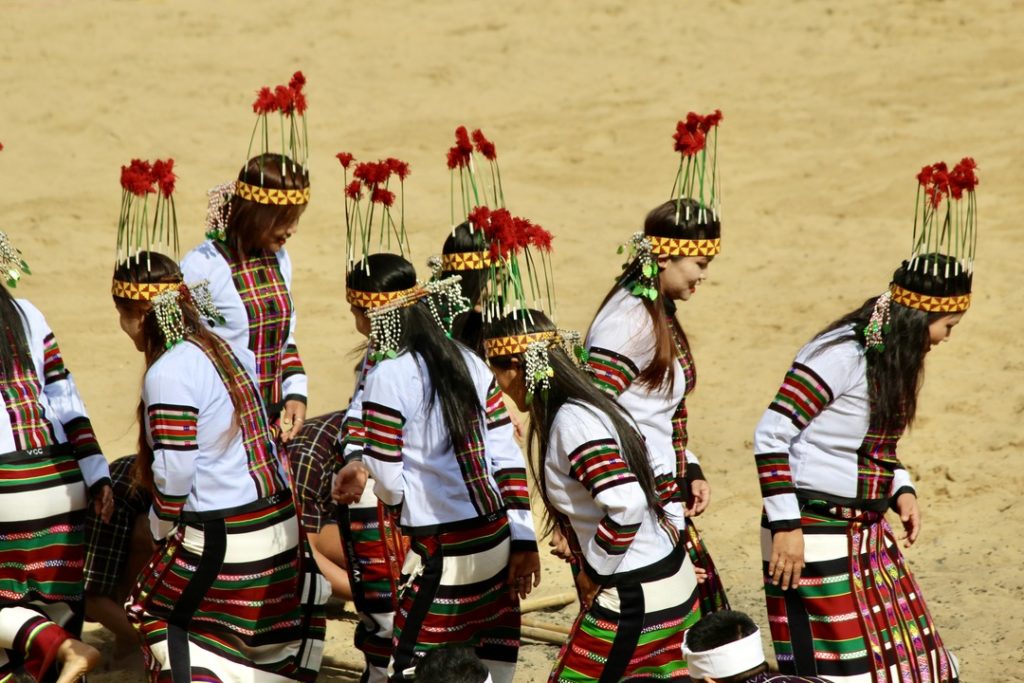Introduction to Mizoram
Mizoram is a state in India, located in the north-eastern part of the nation. Mizoram’s capital city is Aizawl. With a total size of 21,087 sq km and 90% of the country covered by woods, hills, and valleys, the state ranks 24th in India.
Mizoram’s evergreen highlands are well-known. The mountains are crisscrossed by flowing rivers and stunning sparkling waterfalls. As a result, it’s known as Blue Mountains Country. A dense bamboo jungle can also be found there.
The words “Mizo” and “Ram” are combined to form the state’s name. Which is the result of the indigenous people’s name being “Mizo,” while the term “Ram” in the Mizo language means “land.” As a result, “Mizoram” translates to “Land of Mizos.”
The state of Mizoram shares a border with three other northeastern states: Assam, Manipur, and Assam and an international border with Bangladesh and Myanmar, its two neighbouring countries with a 722-kilometer border.
The state of Mizoram is divided into 11 districts: Aizawl, Lunglei, Champhai, Kolasib, Serchhip, Lawngtlai, Siaha, Hnahthial, Saitual, Mamit, and Khawzawl.
Life at Mizoram

Rice is Mizoram’s primary food, and Mizos prefer to use non-vegetarian items in all of their meals. Mizos eat a variety of foods, including fish, poultry, pig, and beef.
The state’s most important event, Chapchar Kut, takes place in March. It’s a spring festival that they commemorate with zeal and joy. Some of the state’s most well-known traditional dances include Cheraw, Khullam, Chheihlam, and Chai.
The ‘Puan’ is one of the traditional costumes worn by Mizoram ladies. During festivals, the majority of Mizo women wear puanchei. Pawl Kut and Chapchar Kut are the two primary outfits.
Mizoram Facts that lead to having the highest literacy rate in India
Language
Mizoram’s official languages are Mizo and English. For oral communication, the Mizo language is utilised by the people of the state. Yet, due to typically the value of training, management, administration and even bureaucracy, the English language is quite crucial for these people and is widespread.
The Duhlian dialect, often known as the Lusei, is the state’s indigenous language. As a result, it was given the name Mizo Language. A Christian evangelist penned the Mizo script.
As a result, writing is a hybrid of Roman Script and Hunterian translation, with remnants of an accent-based spelling system. The Mizo alphabet consists of 25 letters: A, AW, B, CH, D, E, F, G, NG, H, I, J, K, L, M, N, O, P, R, S, T (with a dot under T), U, V, and Z.
Because the Mizo language lacks its own script, it is written in English letters. As a result, reading and writing Mizo requires only rudimentary English skills. One of Mizoram’s official languages is English, which is a universal language.
Residents of the state speak English fluently, making it simple for them to read, write, and comprehend. As a result, the language contributes to Mizoram’s status as the country’s most literate state.
Education

Education is one of the most important factors in Mizoram’s reputation as India’s most literate state. The education system in Mizoram covers a wide range of formal education programmes. There is something for everyone, from elementary to university, and from training institutions to technical courses.
The Indian government mandates at least a high school diploma. As a result, public schools no longer charge tuition and offer free textbooks and lunches to pupils.
Right to education to make the state more literate
The Mizoram government passed the Right of Children to Free and Compulsory Education (RTE) Act in 2009. The Mizoram Right of Children to Free and Compulsory Education Rules, 2011, are likewise based on it. Children aged six to fourteen must go to school in accordance with legislation.
As a result, it offers specialised instruction as well as free textbooks and writing supplies to children with special needs. It also provides free uniforms to students from low-income families.
Sarva Shiksha Abhiyan scheme
The Mizoram state education department adopted the Sarva Shiksha Abhiyan from fiscal year 2000 to 2001. It is using funds to fundFor example, train teachers and create a district strategy. For example, giving teacher training, drafting a district plan. Conducting a home survey and purchasing cars are examples.
Higher and Technical Education in Mizoram
The officer of Higher and Technical Education oversees higher education for the Mizoram state government. As a result, the company’s headquarters are on Mac Donald Hill in Zarkawt. For example, give teachers training, writing a district plan.
Higher education, technical education after high school, technical education at the diploma level, and language development are all under its purview. On-campus, there are additional 20 colleges.
Two training institutions, one for Hindi and the other for B.Ed., as well as two diploma programmes, are available.
Medium of Education
English is the predominant language of education in private schools, while Mizo is the primary language of instruction in government schools. At higher levels of education, however, English is the only language of instruction.

Population
Mizoram is India’s second-least-populated state, second to Sikkim. As a result, tribal people account for 95 percent of the population of Mizoram. The Kuki, Pawi, and Lakher are the most well-known Mizo tribes. According to the 2011 population census, Mizoram’s literacy rate has risen to 91.33 percent.
Men have a literacy rate of 93.35 percent, while women have a literacy rate of 89.27 percent. Mizoram’s literacy rate has improved steadily since then, reaching 88.80% in 2001. As a result, male literacy rates stood at 90.72 percent, while female literacy rates stood at 86.75 percent.
There are 438,529 male literates and 409,646 female literates. Mizoram has an estimated literacy rate of 848,175 people. The state’s population could reach 1.27 million by 2022. (12.7 Lakhs). According to Aadhar India’s unique id, the population would be 13.32 lakhs by 2020.
in the year 2022, the Mizoram population is predicted to reach 1,308,967 . With a male population of 662,433 and a female population of 646,534.
The Highest and Lowest populous district in Mizoram
The following is the state’s most populous district and its predicted population in 2022: Aziawl district has a population of 477,569 people, Lunglei district has 192,584 people, Champhai district has 150,014, and Lawngtlai district has 140,648 people.
The forecasts for Mizoram’s least populous district in 2022 are as follows. Saiha has a population of 67,493 people, Serchhip has 77,470 people, Kolasib has 100,158 people, and Mamit has 103,032 people.
The Highest and Lowest literate district in Mizoram
Mizoram’s most literate districts are as follows: Serchhip district has a literacy rate of 97.91 percent, Aizawl district has a literacy rate of 97.89 percent, Champhai district has a literacy rate of 95.91 percent, and Kolasib district has a literacy rate of 93.50 percent.
Lawngtlai district has a literacy rate of 65.88 percent, Mamit district has a literacy rate of 84.93 percent, Lunglei district has a literacy rate of 88.86 percent, and Saiha district has a literacy rate of 90.01 percent.

Mizoram’s urban population Literacy rate
The urban population of Mizoram makes up 52.11 percent of the total population. In urban regions, there are 571,771 people, including 286,204 men and 285,567 women. The urban population has grown by 52.11 percent in the last ten years.
The average literacy rate in Mizoram’s urban regions was 97.63 percent, with male literacy at 97.98 percent and female literacy at 97.02 percent. Mizoram’s urban area has a total of 484,841 literates as a result.
Mizoram’s rural population Literacy rate
About 47.89 percent of Mizoram’s population lives in rural villages. As a result, there are 269,135 males and 256,300 females in the population. The rural parts of Mizoram had a total population of 525,435. Between 2001 and 2011, the population grew by 47.89 percent.
Male and female literacy rates in rural Mizoram were 88.16 percent and 75.23 percent, respectively. In rural Mizoram, the average literacy rate was 84.10 percent. There were 363,334 literates in rural areas.
Conclusion
Mizoram is India’s fifth smallest state and the country’s second most literate. Serchhip district in central Mizoram has the highest literacy rate of 97.91 percent, followed by Aizawl district with 97.89 percent.
The freedom to read and write is a fundamental human right. It’s more than just a means of personal liberty. But there’s also social reform to consider. The Indian government has implemented a number of policies and programmes in this area.
As a result, it attempts to lower the country’s illiteracy rate.
Since independence, the population and literacy rates of India’s North-Eastern states have risen considerably. Mizoram is the most literate among the North Eastern states, with a literacy rate of 91.3 percent.
It has the highest male literacy rate, at 93.3 percent, according to the 2011 census data. Mizoram has the country’s highest female literacy rate of 89.3 percent.


I am actually delighted to glance at this web site posts which includes lots of valuable facts, thanks for providing these kinds of statistics.